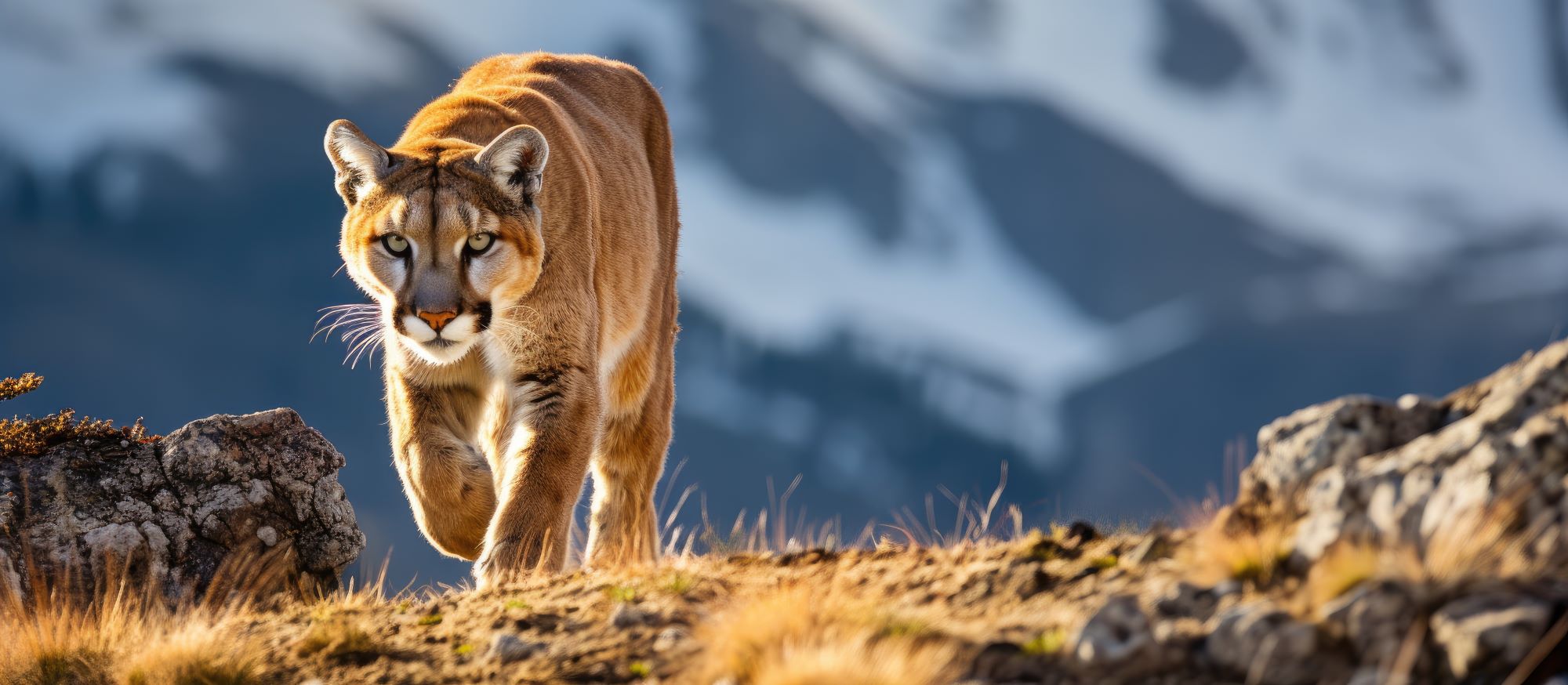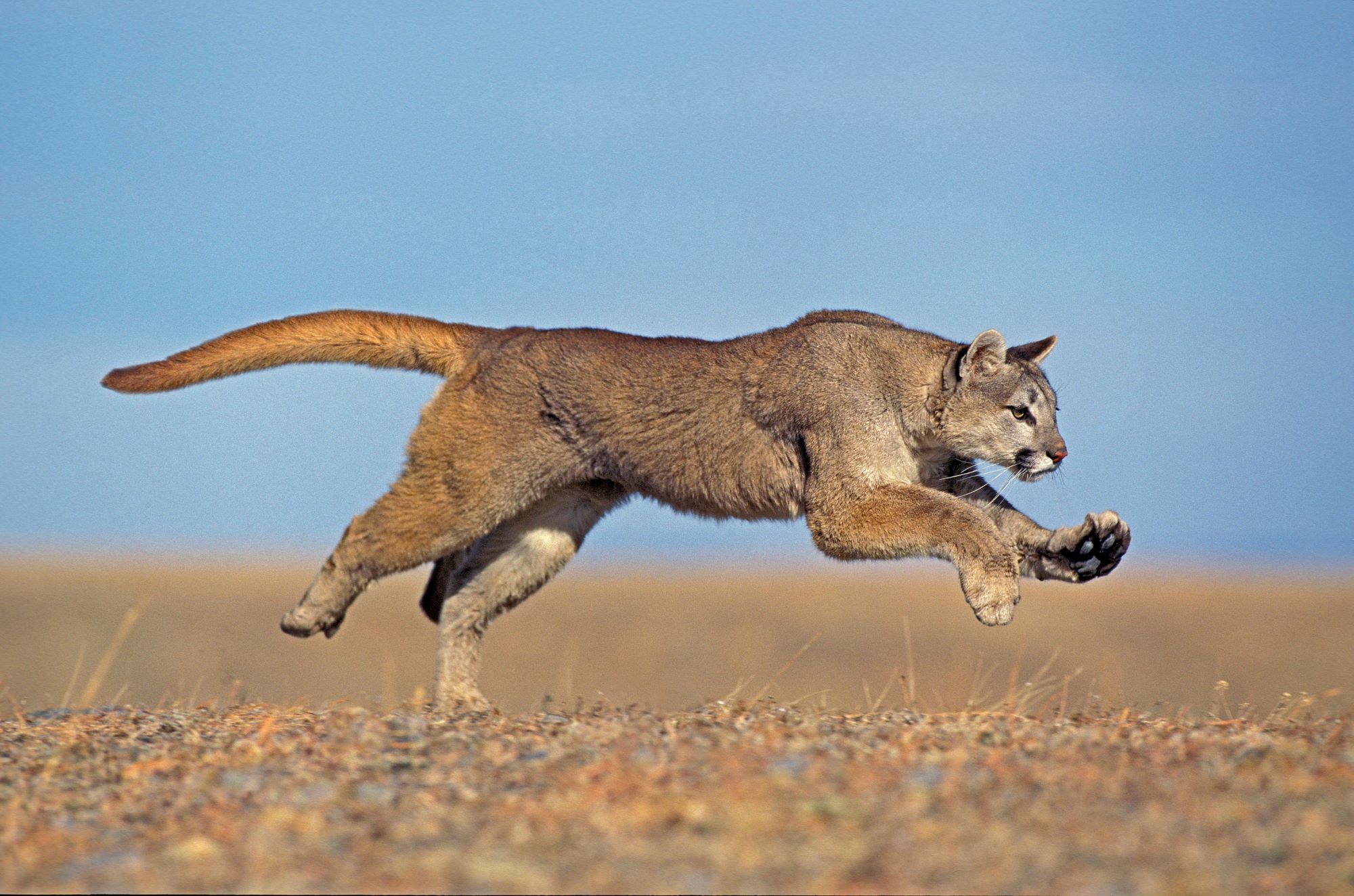
Mountain Lions in Utah
Mountain goats in Utah are a notable and fascinating aspect of the state's wildlife, particularly in the high, rugged mountain ranges like the Uintas and the Wasatch. Not native to Utah, mountain goats were introduced to the state in the late 1960s and early 1970s for wildlife viewing and hunting opportunities. Since then, they have adapted well and established stable populations in these alpine environments.
Physically, mountain goats are easily recognizable by their thick, white fur, which provides insulation against the harsh mountainous climate, and their black horns, present in both males and females. They are relatively small compared to other ungulates in Utah, with adult males weighing up to 300 pounds and females slightly smaller. One of their most remarkable features is their agility and sure-footedness on steep, rocky terrain, allowing them to access areas that are nearly inaccessible to predators and most other animals.

Mountain goats are herbivores, feeding primarily on grasses, herbs, mosses, and lichen. In the rugged high-altitude environments of Utah, they often navigate treacherous cliff faces to find food, especially during the winter months when snow covers much of the ground vegetation. This diet, while relatively sparse, is sufficient to sustain them throughout the year.
The life cycle of mountain goats is closely attuned to the high-altitude environments they inhabit. Breeding occurs in the fall, and kids are born in late spring, timed with the melting of snow and the availability of fresh vegetation. Kids are remarkably agile soon after birth, able to navigate their challenging environment with surprising skill.
In Utah, mountain goat populations are carefully managed by the Utah Division of Wildlife Resources. Management practices include population surveys, habitat assessments, and, in some areas, controlled hunting to maintain sustainable populations. The introduction and subsequent management of mountain goats have not been without controversy, particularly regarding their impact on sensitive alpine ecosystems and native plant communities.
Conservation concerns revolve around the potential for overgrazing and competition with other native species, particularly in fragile alpine habitats. Research and monitoring are ongoing to understand the ecological impact of mountain goats in these environments and to guide management decisions.
In summary, mountain goats in Utah, though not native, have become an iconic part of the state's high mountain landscapes. Their presence is a result of successful wildlife introduction and management efforts, and they continue to fascinate both wildlife enthusiasts and casual observers. The management of these populations reflects the complex balance between wildlife conservation, habitat preservation, and recreational interests in Utah's diverse and stunning natural landscapes.